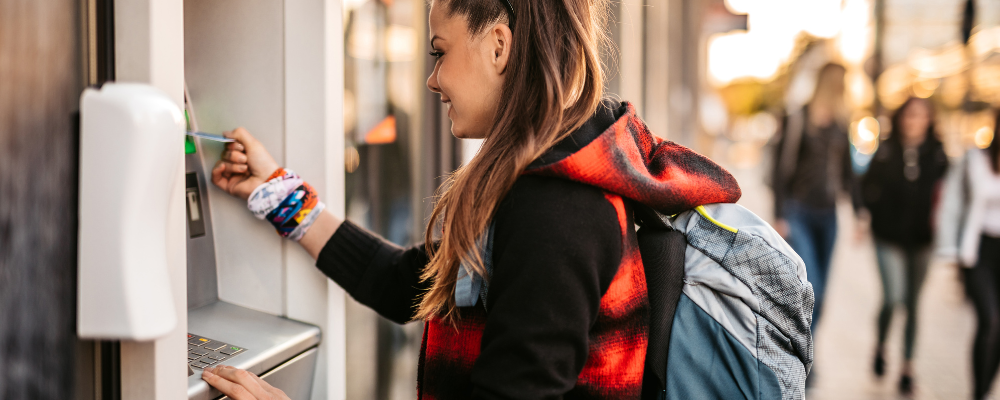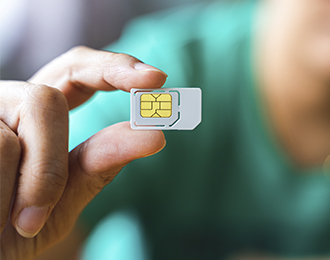
What you need to know about card skimming
When travelling abroad, you’ll likely run into a situation where you need to use cash for a purchase, as many countries still favour cash over cards. If you haven’t used an exchange service, this necessitates using a credit or debit card to access funds, often via an ATM. While this is a common practice, it does come with certain risks – one in particular being card skimming. Card skimming is a prevalent issue you should be aware of when travelling and in this guide, we’ll explore what it is and offer tips on how to protect yourself on your next holiday.
What is credit card skimming?
While you’re travelling, the last thing you want to worry about is credit card fraud. However, card skimming is a sophisticated and often unnoticed form of digital theft, that can turn your holiday upside down. A skimming device is normally discreetly installed at ATM’s and other point-of-sale terminals, frequently used by tourists. These devices gather and stores all the details stored in your card’s magnetic stripe, allowing fraudsters to make unauthorised transactions with ease.

How does card skimming work?
While exploring new destinations, you might use your bank cards at various locations. Debit and credit card fraud skimming typically involves a hidden card reader and a camera or fake keypad, which read and store your card’s information when it is swiped. There are also card skimming methods such as phishing, where travellers may be tricked into providing their card details through misleading emails or fake websites that could resemble legitimate travel or accommodation sites.
Can contactless cards be skimmed?
Contactless cards have slightly less exposure to the traditional card skimming methods, however, no card is completely safe against skimming techniques. A device called a near field communication (NFC) reader, can be used to read and transmit information wirelessly when a contactless card comes within a certain range – this type of card fraud is not easy to spot as it doesn’t require tampering with an ATM or point-of-sales terminal. Below are a few things you can do to help keep your contactless card safe:
- Use an RFID-blocking wallet : these prevent unauthorised payments from your card while it’s inside the wallet.
- Set transaction limits: Set a limit on your contactless transactions so that large payments must be made via PIN.
- Monitor your accounts regularly: Check your bank statements frequently to spot any odd-looking transactions early.
How to avoid card skimming
There’s certain things you can do to provide yourself with a level of card skimming protection such as:
- Do your research: Before visiting a new country, do some research on the reputable ATMs in the country- there are thousands of reviews online that should point you in the direction of safe ATMs. This doesn’t guarantee a card-skim-free experience but should help to minimise the risk. Reviews will also often include whether the ATMs include any fees which can help you make your decision once you reach your destination.
- Cover the keypad: When entering your pin at an ATM or a point-of-sale terminal, always cover the keypad to prevent hidden cameras from capturing your information.
- Monitor your bank accounts: As above, regularly check your bank statements to quickly identify any suspicious activity.
- Use ATMs in secure locations: Opt for ATMs that are in well-lit, high-traffic areas and be cautious of non-bank or unrecognisable ATMs.
- Inspect machines for tampering: Before using an ATM or card terminal, look for signs of tampering such as loose parts, unusual graphics, or anything that doesn’t match the machine's style.
By staying vigilant and taking these preventative measures, you can significantly reduce your risk of falling victim to card skimming during your travels.
What should you do if you suspect your card has been skimmed?
- Block your card immediately: Contact your bank or card issuer to report the issue and prevent further unauthorised transactions.
- Review your transactions: Carefully go through your recent transactions and report any that you don't recognize.
- Report to local authorities: Depending on your travel location, report the fraud to the local authorities or the Australian Cyber Security Centre when back in Australia.
In most cases, your bank or card issuer will be able to help you out and tell you the next steps in recovering any lost funds. You’ll likely be issued a new or temporary card to assist you. Check your travel insurance policy wording to check what cover could be available in these situations, as this could differ between policies and insurers. You may need to prove to your travel insurer that you could not have anticipated the scam attack occurring and took reasonable care to avoid scams, such as following the steps we’ve gone through in this article.
Safe travelling!
The content of this article is general and provided for information purposes only. Southern Cross Travel Insurance (SCTI) doesn’t guarantee or warrant the accuracy, completeness or currency of any article.
This article may contain hyperlinks to other websites owned or operated by third parties, or references to third party products or services. SCTI isn’t responsible for, and makes no recommendation about, the content or accuracy of any third party website, or for the suitability or performance of any product or service. The inclusion of a link in this article doesn’t imply that SCTI endorses the website or third party product/service.





